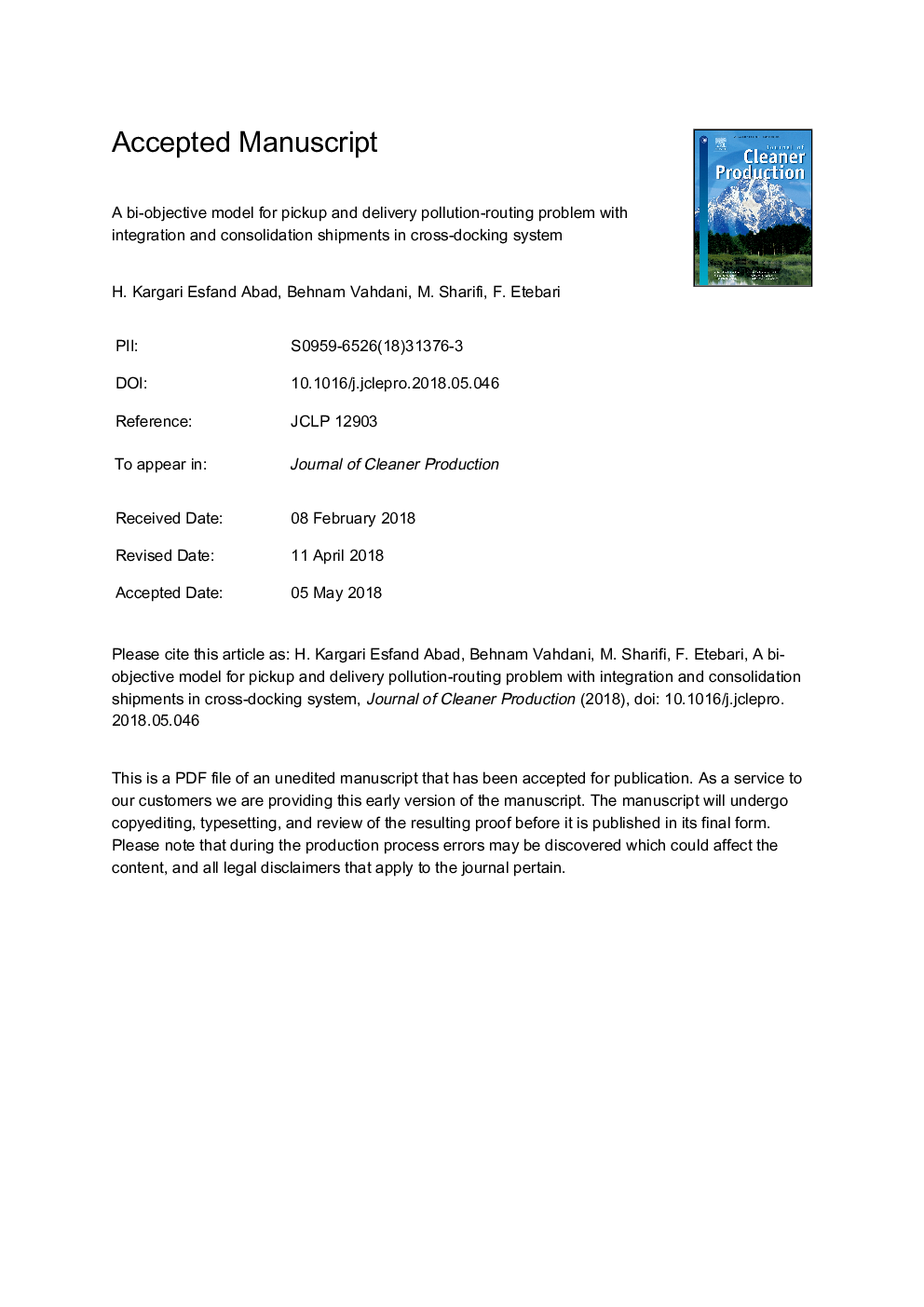| کد مقاله | کد نشریه | سال انتشار | مقاله انگلیسی | نسخه تمام متن |
|---|---|---|---|---|
| 8094686 | 1522060 | 2018 | 33 صفحه PDF | دانلود رایگان |
عنوان انگلیسی مقاله ISI
A bi-objective model for pickup and delivery pollution-routing problem with integration and consolidation shipments in cross-docking system
ترجمه فارسی عنوان
یک مدل دوبعدی برای مشکل حمل و نقل آلودگی و حمل و نقل با ادغام و تحویل محموله در سیستم متقابل متصل
دانلود مقاله + سفارش ترجمه
دانلود مقاله ISI انگلیسی
رایگان برای ایرانیان
کلمات کلیدی
اتصال متقابل، مشکل رانندگی آلاینده، وانت و تحویل، ادغام، تثبیت،
موضوعات مرتبط
مهندسی و علوم پایه
مهندسی انرژی
انرژی های تجدید پذیر، توسعه پایدار و محیط زیست
چکیده انگلیسی
Cross-docking is one of the effective strategies in logistic systems that lead to the reduction of inventory costs and timely delivery of cargos. Overall, activities related to cross-docks include three general classes of loading, sorting, and unloading of cargo. By sorting, it means integration and consolidation. However, most research works merely take loading and unloading related consideration into account. Observing the considerations associated with integration and consolidation processes in cross-docking can demonstrate the effectiveness of this strategy among other logistical systems alone. Increasing social awareness on sustainable development has also led to the emergence of concepts related to green and sustainable supply chain management. Thus, current research provides an integrated model for coordination between decisions related to pickup the cargo from the suppliers, vehicle routing from suppliers to the cross-dock, allocation of inbound vehicles to cross-dock, integration, and consolidation of cargo in cross-dock, allocation of sorted cargo to outbound vehicle, and vehicle routing from cross-dock to customers. The mathematical programming model provided in this research has two purposes. Firstly, it seeks for minimizing total system cost, and secondly, it aims at minimizing total fuel consumption by vehicles, which leads to the reduction of greenhouse gases. Additionally, in order to solve the proposed model, three multi-objective meta-heuristic algorithms, non-dominated ranking genetic algorithm (NRGA), non-dominated sorting genetic algorithm (NSGA-II), and multi-objective particle swarm optimization (MOPSO) are developed. The results show that taking into account the processes of integration and consolidation in the cross-docking, processes of collecting products from suppliers and delivering them to customers makes it possible to obtain the more accurate estimates of the final date of delivering the products to the customers. Furthermore, the above considerations reduce the system costs and, as a result, make economic savings. Therefore, it is reasonable to justify the use of cross-docking. As a result, a sustainable and integrated structure is achieved in cross-docking planning.
ناشر
Database: Elsevier - ScienceDirect (ساینس دایرکت)
Journal: Journal of Cleaner Production - Volume 193, 20 August 2018, Pages 784-801
Journal: Journal of Cleaner Production - Volume 193, 20 August 2018, Pages 784-801
نویسندگان
H. Kargari Esfand Abad, Behnam Vahdani, M. Sharifi, F. Etebari,
